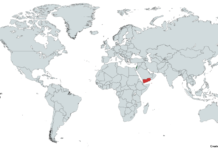The recent military action by the United States and the United Kingdom in Yemen, particularly on the second day of strikes, has intensified the situation in the region. These strikes were initiated in response to the Houthi rebels’ increased aggression towards commercial shipping in the Red Sea. This strategic waterway is crucial for international trade, and the safety of vessels navigating this area is of paramount importance to the global economy.
On the second day of the operation, the U.S. military targeted a Houthi radar site in Yemen using Tomahawk land attack missiles launched from the USS Carney. This attack was a continuation of the broader military action initiated by the U.S. and the U.K. The initial day of strikes involved hitting 28 locations and addressing over 60 targets. The strikes were aimed at degrading the Houthis’ missile, radar, and drone capabilities, which pose a significant threat to international shipping lanes.
The Houthis have claimed that these strikes were motivated by a desire to stop Israel’s military actions in Gaza, asserting that they have carried out 27 attacks on ships since November 19, 2022. However, the U.S. and U.K. governments have expressed their commitment to defending international commerce and maintaining the free flow of trade through the Red Sea. President Joe Biden and British Prime Minister Rishi Sunak have both emphasized the necessity of these strikes in response to the unprecedented Houthi attacks.
The aftermath of the strikes saw at least five people killed and six others wounded, as reported by a military spokesman from the Houthi rebel group. The U.S. military stated that their targets included logistical hubs, air defense systems, and weapons storage locations, focusing on reducing the Houthis’ military capabilities.
The escalation in the Red Sea has raised concerns about the potential for further conflict in the region. The Houthis have vowed a strong response to these strikes, indicating the possibility of continued hostilities. The involvement of the U.S. and U.K. in this situation reflects the broader geopolitical dynamics in the Middle East, particularly regarding Iran’s backing of the Houthis and the ongoing conflict between Israel and Hamas.
Image is licensed under the under the Creative Commons CC0 1.0 Universal Public Domain Dedication and was created by Ecrusized.









